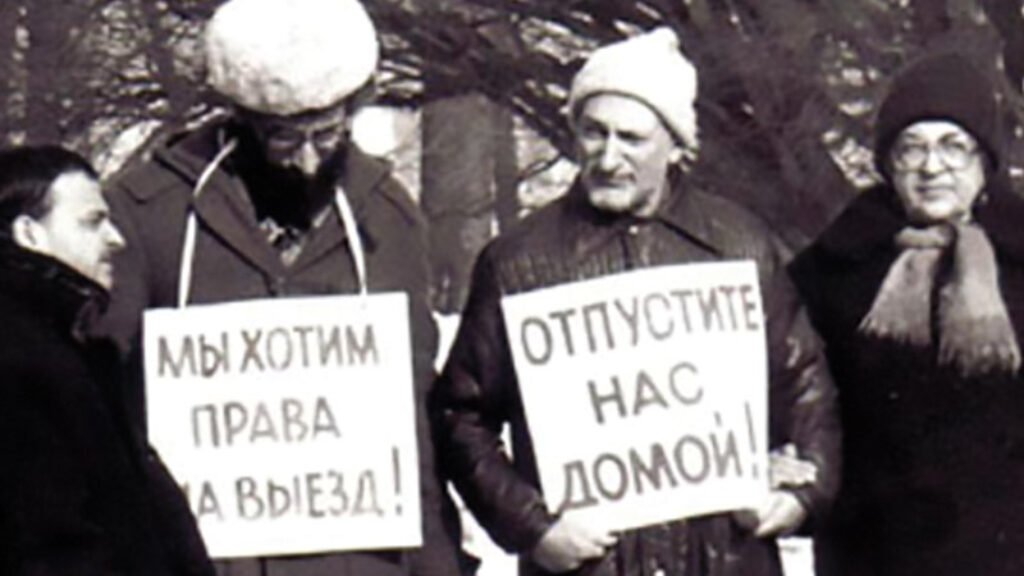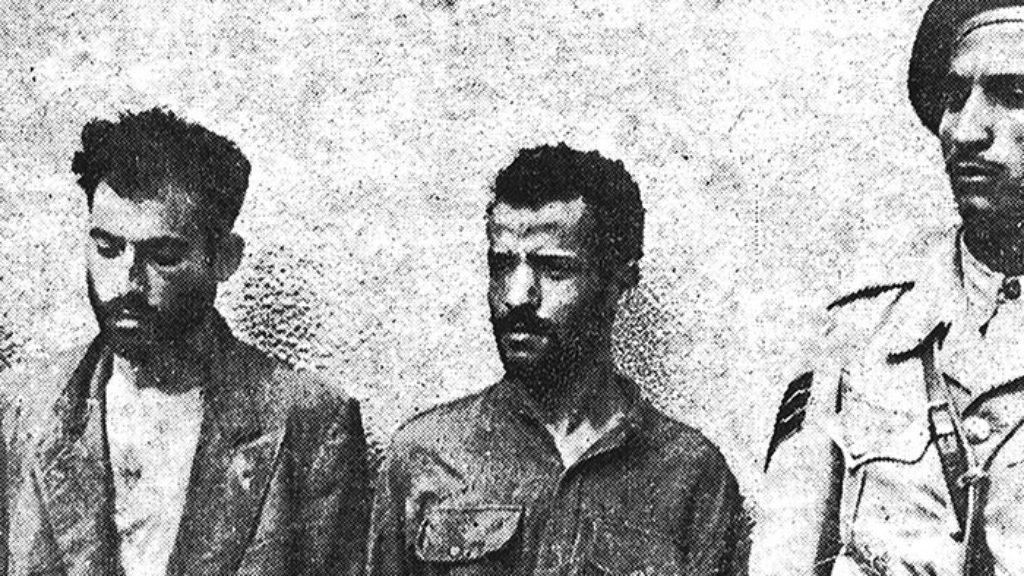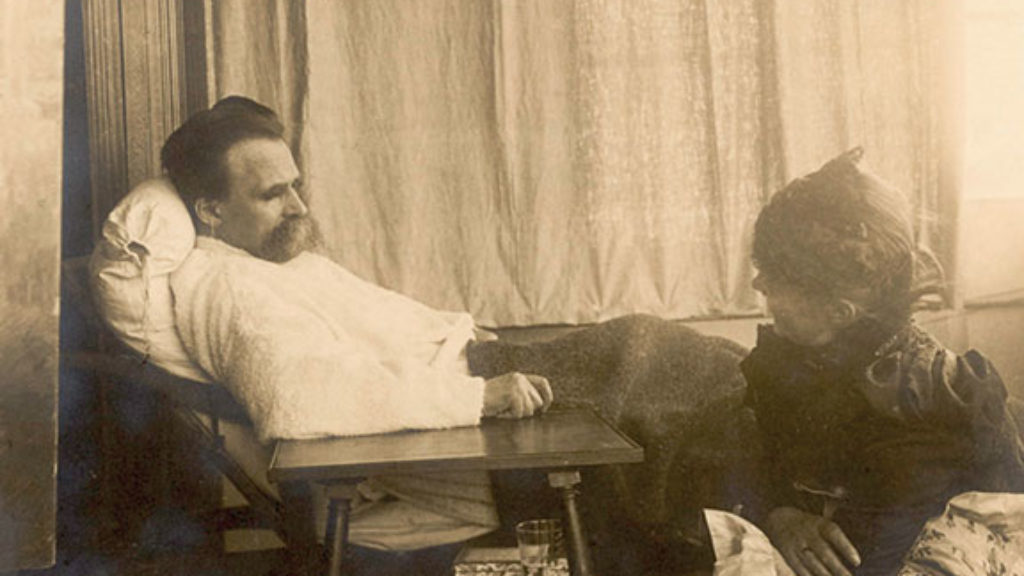Early Modern Mingling
Jewish historians writing in the postmodern key seem determined to cut their subject down to size. Jewish history, for them, is like politics for Tip O’Neill: it’s all local. Rather than treat individual Jewish communities as constituent parts of a worldwide Jewish people, they see them as discrete entities embedded within dominant cultures and societies. There are, they maintain, Jewish histories, not Jewish history. They hold the former to be, as David Ruderman (who disagrees) puts it, “radically singular, diverse, and heterogeneous, lacking common features,” except insofar as they reflect “general trends located in non-Jewish society.” But such embedded and indebted micro-history is hardly the stuff of the “exciting and compelling” story that he believes the Jewish past has to tell.
Ruderman, who is a professor of history at the University of Pennsylvania and the director of its Herbert D. Katz Center for Advanced Judaic Studies (full disclosure: I have twice been a most happy fellow there), boldly opposes the historiographical zeitgeist. In Early Modern Jewry: A New Cultural History, a book dealing with the period from the expulsion of Jews from Spain in 1492 to the advent of Jewish emancipation in Central Europe in 1782, he aims to uncover “not merely a Jewish history specific to a Polish context or an Italian or an Ottoman, but a history of the Jews and their cultural legacy as a whole.” In order to do so, he employs the idea of “connected histories.” Other historians have taken this approach both to highlight the political, economic, social, and cultural diversity of different peoples, and to identify a characteristic cluster of big historical “processes” or “experiences” that nonetheless connect them. Such an approach can show that each Jewish community of the period was indeed distinctly Polish, or Italian, or Ottoman (or whatever), but also categorically Jewish. We are in Ruderman’s debt for introducing this useful—and currently contrarian—concept into Jewish historical discourse.
Ruderman focuses on the following five factors of “Jewish cultural formation,” which, he argues, determined the cultural history of the interconnected Jewish people in the early modern period and devotes a chapter to each of them: mobility, communal cohesion, the explosion of knowledge, the crisis of rabbinic authority, and the advent of mingled identities.
In discussing the first of these factors, Ruderman sketches the main Jewish migratory vectors of the period: Sephardim moving from the Iberian Peninsula to Italy, the Ottoman Empire, Western Europe, and the Americas; Ashkenazim from the German lands to Poland-Lithuania. He gives special attention to the “conversos” who often switched identities from Christianity to Judaism and back again as they shuttled among centers that varied in the degree of hostility and hospitality they demonstrated toward Jews. The “circulation and exchange of individuals, ideas, goods, and institutions” were, Ruderman says, the defining features of the Sephardic diaspora. He notes how Jews brought their economic and technical skills to new areas, pioneering in fields such as textiles, winemaking, banking, printing, commerce, and management. He also highlights the formation of “multicultural” Jewish communities such as Venice, Amsterdam, Safed, and Izmir where different Jewish ethnic groups (Sephardic, Ashkenazic, Italian, Romaniot) lived together and influenced each other in unpredictable ways.
After presenting a long list of itinerant rabbis and scholars, extending from the sixteenth-century Isaac and Leone (Judah) Abravanel and Joseph Karo to the eighteenth-century Israel Zamosc and Isaac Satanov, Ruderman suggests that it was the reaction of such luminaries to new cultural contexts that accounts for the renaissance of Jewish culture in this period. These scholars produced works that contributed to the creation of a universal Jewish legal tradition (most notably through Karo’s Shulchan Arukh), but also planted some of the seeds that eventually blossomed into the Jewish Enlightenment, as when the sixteenth-century physician and polymath Azariah de’ Rossi insisted on distinguishing between rabbinic midrash and history.
The new forms of Jewish communal cohesion that Ruderman locates in this period found expression from Amsterdam to Cracow to Istanbul in autonomous Jewish institutions, which developed on a larger and more ramified scale than in previous eras. This often occurred with the support and even encouragement of the non-Jewish authorities. Ruderman describes this as an outgrowth of the “new political landscape of early modern Europe, its religious wars, the movement of populations, the rise of new governments hospitable to the influx of new immigrants, and the struggle for power between kings and noblemen.”
Eventually, as kings consolidated their power and regimes stabilized, they decided to assume more direct control over their Jewish populations and by the second half of the eighteenth century Jewish autonomy everywhere was under attack, and the early modern period was over.
Ruderman’s explanation of how the advent of print fostered the connection between Jewish communities and made Jewish culture trans-regional and pan-European (at least) is especially interesting. “Classics of the Sephardic library” were thus made available to Ashkenazic readers. Later, the process was reversed, bringing Ashkenazic classics to the far-flung centers of the Sephardic world. Print also brought kabbalistic works—and especially the ritual practices they fostered—into the hands of semi- and un-learned Jews, and made the everyday languages of such Jews, Yiddish and Ladino, into ones in which Torah was now also discussed. Finally, print engendered a new dialogue between learned Christians and learned Jews. In short, print created a “knowledge explosion” that redefined both the content and the contours of Jewish culture.
To illustrate the crisis of rabbinic authority Ruderman focuses on the eighteenth-century controversies surrounding figures such as the Sabbatian prophet, Nehemiah Hayon; the talmudist, Sabbatian sympathizer, and apparent dabbler in Christian theology, Jonathan Eybeschütz; and the messianic pretender, Jacob Frank. Following Matt Goldish, Ruderman presents these characters not as genuine heirs of Shabbtai Tzvi, but rather as the instigators of struggles over the legitimacy of religious enthusiasm. They inspired fear in the hearts of rabbinic authorities, who felt themselves to be surrounded by intellectual and cultural threats, especially prophecy and messianism. The rabbinate’s response was to denounce and delegitimize those it deemed to be heretical, “declaring itself the only authentic form of Judaism.” Thus, in the eighteenth-century writings and actions of such traditional authorities as Rabbis Moses Hagiz, Jacob Sasportas, and Jacob Emden, Jewish “Orthodoxy” was born.
The boundary crossings of conversos, Sabbatians, Christian Hebraists, and Jewish converts to Christianity drew new borders for Judaism and Christianity and led to the formation of “mingled identities,” Ruderman’s fifth feature. In this chapter, he introduces us to people like Samuel Pallache (d. 1616), who Edward Kritzler has called the “pirate rabbi.” Born in Morocco but of Spanish converso descent, he was the first self-declared Jew to settle in Amsterdam, yet he “easily adopted the religious identity of his surroundings,” whatever they happened to be, “viewing it solely pragmatically as a kind of business cost.” Nehemiah Hayon “espoused a triune notion of God” based on ideas found in the Zohar, “presenting an allegedly Jewish belief that easily appeared to some as identical with that of Christianity.” Glückel of Hameln’s grandson, Moses Marcus, like many learned converts, made his living in the Christian world as a self-proclaimed expert on Judaism and maintained “fiercely loyal and warm feelings for Jews and their beliefs.”
In a coda, Ruderman claims that his five factors of cultural formation capture “a sense of the whole” of early modern Jewish history “in relation to its parts.” I am in sympathy with Ruderman’s grand objective, and see much evidence in his book that the histories of early modern Jewish communities were interconnected. However, Ruderman’s declaration that it is precisely these five factors that connect the history of all of the early modern Jewish communities is somewhat exaggerated. Indeed, Ruderman almost admits as much in several places. At one point, for example, he describes his five factors as being “at best, my own intuitive sense of what was distinctive and unprecedented about this era.” And despite all the emphasis that he places on the signal cultural importance of mobility, he regretfully concedes, “all of these examples do not establish beyond any reasonable doubt that there was a direct link between traveling people and traveling ideas.” It might have been wiser for Ruderman to give more weight to his own reservations and to have lowered expectations by speaking of some important characteristics of Jewish early modernity.
Moreover, in attempting to provide a comprehensive cultural history, Ruderman steps into territory that doesn’t seem to hold much interest for him. With the exception of the second chapter on communal cohesion, his treatments of Ashkenazic, Polish, and Ottoman Jewry (together composing the vast majority of Jews in the early modern era) are cursory in comparison with cosmopolitan Sephardim living in Amsterdam and on the Italian peninsula; those he terms “carriers of culture” (migrant rabbis, medical students, itinerant preachers, skeptical authors, printers and book dealers); and, of course, the conversos, Sabbatians, Christian Hebraists, and converts. Given the declaration on the first page of the book that the lure of the early modern period for him is its display of “radical change, social and cultural crises, and the complex and often unexpected mingling of the old and new,” Ruderman’s emphasis is perhaps understandable, but not fully justified.
Other related questions follow upon the issue of Ruderman’s relative neglect of large parts of the early modern Jewish world. For instance, if, as Ruderman maintains, the borders between Judaism and Christianity were redrawn in the early modern era, why was the absolute number of Ashkenazic and Polish converts so low? Nineteenth-century English missionary reports from Poland and Russia reveal the frustrating experiences of those dedicated to converting Jews. They certainly weren’t any more successful in earlier centuries. And was the resurgence of popular Jewish pietism in seventeenth- and eighteenth-century Ashkenaz/Poland entirely about enthusiasm and not about tradition? The religious ferment that Ruderman spotlights so sympathetically seems to have led, in the North and East, at least, more to an obscurantist, crude, popular mysticism than to a secularized, renewed, creative, rationalized religion.
A history, like Ruderman’s, that purports, “to capture a sense of the whole in relation to its parts,” but remains preoccupied with change and the intellectual avant-garde, leaves itself open to a criticism once voiced by Gershon Hundert:
Historians have placed too much emphasis on change and focused too much on ideology . . . they have concentrated too much on regions where few Jews lived and not enough on areas where most Jews lived.
In a book aiming to present the cultural history of early modern Jewry, one would expect more attention would be given to many more categories of people, starting with women of all kinds, whose poor representation in this volume cannot be excused by Ruderman’s claim in his introduction that scholarship on Jewish women during this period “is still in its infancy.” Any reader of Glückel of Hameln’s celebrated seventeenth-century memoir knows what an important part women played in—to begin with—Jewish mobility, the knowledge explosion, and the mingling of identities. Moreover, it seems to me that at the very least a sixth factor cries out for analysis: the persistence of new iterations of traditional texts and forms.
This leads us to another set of questions that Ruderman doesn’t fully address. Why, in Central and Eastern Europe and the Ottoman Empire, did the knowledge explosion result in a wave of new inflections of traditional Jewish texts and doctrines (for both men and women), but relatively little openness to new non-Jewish ones? (Rabbi Moses Isserles in sixteenth-century Cracow, for example, was forced to defend his modest—and outdated—reference to the physical sciences by insisting that he had learned it by reading Maimonides and not, God forbid, any non-Jewish author.) To what audience did the “carriers of culture” carry it? Did it include the minimally educated or uneducated Jews, the small-time merchants and artisans, the daily synagogue goers? How did it resonate with them? What forms did it take? Were there significant gender differentiations? How aware was the audience of the new religious borders, the crisis of rabbinic authority, or the mingled identities that Ruderman has elucidated? How did these affect their lives?
As a means of understanding the connected histories of Jewish communities, Ruderman’s five-part paradigm may actually fit our own era better than any earlier one. It calls to mind our ultra-mobile world, with its hyper-organized Jewish community; web-powered knowledge explosion; ubiquitous challenges to authority; and accelerated mixing of identities. Indeed, one might wonder whether it is not our contemporary Jewish experience that triggered David Ruderman’s “intuitive sense” of what was going on in the early modern period. Such large questons aside, his intuition has given birth to a brave, stimulating, highly erudite, and informative, if less than completely satisfying, book.
Suggested Reading

Problems with Authority
Paul Goldberg’s latest novel, The Dissident, is a narrative tour de force that plays far too fast and loose with the historical facts, leaving its readers deeply misled.

Our Man in Beirut
The Arab Section, suggests Matti Friedman, in one of his latest book's nicer lines, “needed men idealistic enough to risk their lives for free, but deceitful enough to make good spies.”
Your Time Is Up: Jabotinsky at the Sixth Zionist Congress
The young Jabotinsky didn’t exactly take the Sixth Zionist Congress by storm. When he approached Chaim Weizmann, saying, “I hope I am not intruding,” Weizmann replied, “You are.” A newly discovered text, edited by Brian Horowitz and Leonid Katsis.

Twilight of the Anti-Semites
Nietzsche’s reception has been sharply divided between anti-Semitic and philo-Semitic readings. Richard C. Holub's new book explores how the philosopher's views changed over time and whether some of his statements about Jews should be attributed to another hand.
Comments
You must log in to comment Log In